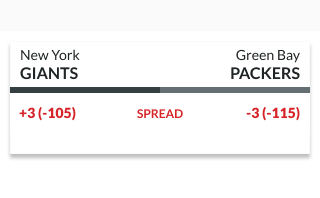Buying Points: Learning to Play the Market With Alt Lines

If you’re just getting into online sports wagering, you’re probably overwhelmed by all of the betting jargon you’ve encountered. While there are many rigid rules in the betting game, one of the most flexible ones is buying and selling points.
Not only is this one of the most common options out there, but it’s also one of the simplest. Buying points can help propel a line in your favor while selling points can increase your profits! Your favorite online sportsbook will also offer alternate lines that can do the same either way.
If this interests you, read on below to find out more!
The Basics of Buying and Selling Points and Betting Alt Lines
It’s not always easy to find a bet you’re comfortable with, so online sportsbooks often provide other opportunities to entice bettors to risk their money. Buying points is one of the ways this is done, as it reduces the risk of your wager. Though, it should go without saying that reduced risk equates to reduced potential winnings.
To buy a point you would simply select a betting market you want to wager on, and then find an alternate line in exchange of less potential profit for taking a lesser risk.
Bettors generally buy points in bets against the spread, but it’s also possible to buy points to get a more favorable number on a totals bet or with team and player props.
The number of points you can buy varies from one sportsbook to another, but a half-point or full-point are the most common options when coming up with a bet that still offers a decent return. The influx of same game parlays, however, have made buying massive amounts of points through alt lines on a spread or total, palatable, as they’re combined with other bets for favorable odds.
When to Buy Points?
Finding the right matchup is the key to successfully optimizing your profits when betting, and that is especially true when it comes to buying and selling points. For example, it could be wise to buy or sell points on either side of the wager seen below:


If you think the Green Bay Packers are going to win this game, albeit by a narrow margin, betting on them at -3 may not be the best idea. If the Packers were to win the game, but just by one (field goal) score, you would not win any money because the bet would become a push (tie).
In this case, it would be favorable to buy a half-point and create a -2.5 spread.
Selling Points
Selling points holds the same concept as buying points except you are adding to your risk and increasing your potential winnings rather than playing it safer.
Using the Green Bay Packers vs New York Giants example above, if you believed the Packers would win the game by anything more than just one field goal it would be wise to sell points. Since in football field goals are worth three points and touchdowns are worth six (plus extra points), you can take advantage of those point margins and sell points to increase the -3 spread to -4 since you believe the game will be at least a six-point (one touchdown) difference. You would earn more winnings for creating a bigger spread for yourself.
Is It the Same for All Sports?
Football is by far the most flexible when it comes to moving lines, but it is certainly not the same across the sporting world.
You can buy points when you’re betting on basketball, but because it scores by one, two, and three points buying just a half-point can be more valuable than in football as it has more of an impact on the final score.
There isn’t much of an opportunity to move the “puck line” in hockey because it is always set at -1.5 due to low scoring totals.
Like hockey, baseball doesn’t allow lines to be moved, but you can buy points on the total runs scored.
Alternative Lines Explained
Alternative lines (or alternative spreads) are most prominent in football. Where buying and selling points is a two-step process (choose line then buy or sell the point), alternative lines are a one-step task. It is as simple as: if you don’t like the original spread on a game, you can just select an alternative spread instead.
For example, if you thought a certain team was going to win a game by over two touchdowns (14 points) and the spread was only -4.5 for that favorite, you could look to the alternative spread category of betting and select a -14.5 spread for yourself.
You are making a bolder statement and taking more of a risk, so in return, your potential winnings increase as a reflection of that.
Finding alt lines in player props has become standard practice in building a SGP. While Derrick Henry rushing for 50+ yards in a game won’t pay much, combining it with Lamar Jackson throwing for 200+, Henry ATTD and a more favorable Ravens spread could get you to a decent payout.
Closing the Gap
Overall, buying and selling points are some of the most straightforward details of betting. It just provides a little extra insurance to your wager. All the basic betting rules apply; the greater the risk, the greater the reward and the lesser the risk, the lesser the reward.
To learn more about the different kinds of creative bets you can place at your sportsbook, check out the rest of our Sports Betting 101 guide.

Evergreen Writer/Editor; Sportsbook Expert
With nearly two decades of experience in sports media, Paul Costanzo turned his professional attention to sports betting and online gambling in January of 2022. He's covered every angle of the industry since then, managing and creating content for PlayMichigan and The Sporting News, and now SBD.



